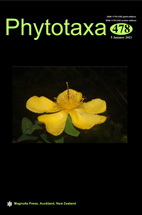Abstract
In this monograph, for the first time, the pollen morphology was analysed in the context of modern taxonomic treatment of the order and statistically evaluated in search of traits that could be utilised in further taxonomic and evolutionary studies. Our research included pollen sampled from 417 herbarium specimens representing 158 species belonging to 125 genera distributed among all major lineages of Apiales. The pollen was mechanically isolated, acetolysed, suspended in pure glycerine and mounted on paraffin-sealed slides for light microscopy investigation.
Although most of the analysed traits were highly homoplastic and showed significant overlap even between distantly related lineages, we were able to construct a taxonomic key based on characters that bear the strongest phylogenetic signal: P/E ratio, mesocolpium shape observed in polar view and ectocolpus length relative to polar diameter. All the investigated traits are easy to observe with light microscopy and defined by clear and well-documented typology.
Early diverging lineages of Apiales constitute a distinct group due to subprolate pollen grains (P/E ratio < 1.25). Among four subfamilies of Apiaceae, Mackinlayoideae can be easily identified based on a combination of traits shared with Klotzschia and Platysace—enigmatic umbllifers with highly uncertain phylogenetic position. Pollen of Azorelloideae is much more diverse but retains many plesiomorphic traits found in early-diverging Apioideae. In contrast, Saniculoideae and most representatives of Apioideae are characterised by evolutionary advanced morphology (perprolate pollen grains with relatively short ectocolpus and bone-shaped outline in colpus view). However, it remains unclear whether similarities between Saniculoideae and higher apioids are an example of convergent evolution or reflect common ancestry. Pollen of Hermas shows a unique combination of traits some of which are typical for Azorelloideae while others resemble Saniculoideae.

